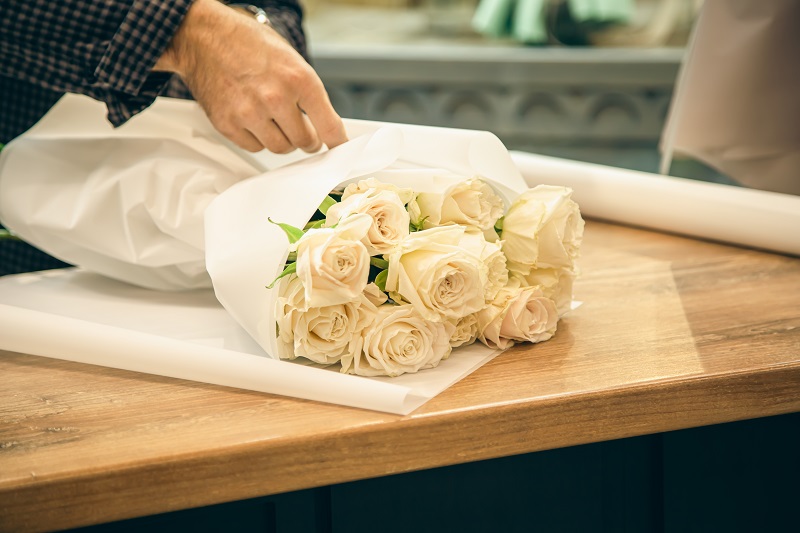The Art Behind a Skilled Florist: Unveiling the Secrets of Floral Design

Introduction: The Secrets Behind a Skilled Florist
Flowers hold a significant place in our lives, marking special occasions or simply brightening up our homes. But have you ever wondered how a skilled florist creates those beautiful arrangements that take our breath away? In this article, we’ll delve into the world of floral design, exploring the artistry, techniques, and knowledge that sets skilled florists apart. So, if you’ve ever been curious about the secrets behind the stunning floral displays at weddings, events, or even your local flower shop, read on to discover the magic behind a skilled florist’s work.
The Art of Floral Design
The world of floral design is vast and intricate, with florists employing a wide range of techniques to create unique and captivating arrangements. Some of the key aspects that contribute to a skilled florist’s artistry include:
– Understanding the visual language of flowers: Florists must be well-versed in the meaning and symbolism of flowers, using this knowledge to create arrangements that convey emotions, sentiments, and messages.
– Color theory: A skilled florist knows how to combine colors effectively, using contrasts and harmonies to create visually appealing designs.
– Balance and proportion: Good floral design is all about striking the right balance between various elements, such as the size and shape of flowers, foliage, and containers.
– Texture and movement: Florists use different types of flowers and foliage to create texture and visual interest, while also considering how the arrangement will change as the flowers open and mature.
– Focal points and accents: Effective arrangements often have one or more focal points, which are emphasized through the use of bold colors, larger flowers, or unique elements.
The Essential Tools of a Skilled Florist
Like any craftsman, a skilled florist relies on a set of specialized tools to create their botanical masterpieces. Some of the most important tools in a florist’s arsenal include:
– Floral shears: These sharp, precise scissors are used for cutting flower stems and trimming foliage.
– Floral knife: A small, sharp knife is essential for cutting through thicker stems or making clean, angled cuts.
– Wire cutters: Florists use wire cutters to trim and shape floral wire, which is often used to create support structures or attach flowers to various surfaces.
– Floral tape: This specialized tape is used to bind flowers, foliage, and other elements together, creating a stable and cohesive arrangement.
– Foam and other support materials: Florists use various types of foam and other materials to provide support and structure to their arrangements, ensuring that flowers and foliage stay in place.
The Importance of Flower Care and Handling
A skilled florist knows that the beauty of an arrangement is only as good as the quality and longevity of the flowers themselves. Proper flower care and handling are essential to ensuring that flowers look their best and last as long as possible. Some key aspects of flower care include:
– Selecting the freshest flowers: Florists must be able to identify high-quality flowers, choosing those that are at the perfect stage of development for their intended use.
– Proper hydration: Ensuring that flowers receive the correct amount of water is crucial to their longevity. Florists often use specialized techniques and products to help flowers absorb water more effectively.
– Temperature control: Flowers are sensitive to temperature changes, so skilled florists must be able to maintain a consistent environment for their blooms, both in storage and during transportation.
– Ethylene management: Ethylene is a natural gas produced by many fruits and vegetables that can cause flowers to wilt prematurely. Florists must take precautions to minimize exposure to ethylene to prolong the life of their arrangements.
The Creative Process: From Inspiration to Finished Design
The creative process behind a skilled florist’s work is often a complex and multi-faceted journey. From finding inspiration to selecting the perfect flowers and executing the design, each step requires care and attention to detail. Some key stages of the creative process include:
– Gathering inspiration: Florists often draw on a wide range of sources for inspiration, such as color palettes, seasonal blooms, and current trends.
– Sketching and planning: Many florists begin their designs by sketching out ideas and creating mood boards, which help them visualize the final arrangement and ensure that all elements work together harmoniously
– Selecting the perfect flowers: Once the design has been solidified, the florist must choose the right flowers and foliage to bring their vision to life.
– Executing the design: The final stage of the creative process involves skilfully arranging the selected flowers and foliage, using the various techniques and tools discussed earlier in this article.
The World of Event Floristry
One of the most exciting aspects of working as a skilled florist is the opportunity to create stunning floral displays for events such as weddings, corporate functions, and parties. Event floristry requires not only a keen eye for design but also excellent organizational and problem-solving skills. Some of the challenges that event florists face include:
– Working with clients: Florists must be able to communicate effectively with their clients, understanding their needs and preferences while also offering guidance and expertise.
– Managing logistics: Ensuring that flowers and materials are delivered on time and in perfect condition can be a complex task, especially when working with large-scale events.
– Creating memorable displays: Event florists must be able to create unique and eye-catching arrangements that make a lasting impression on guests.

Keeping Up with Floral Trends
The world of floral design is constantly evolving, with new trends and styles emerging every season. A skilled florist must stay up-to-date with these changes, adapting their techniques and sourcing new materials to stay ahead of the curve. Some ways that florists can keep up with the latest trends include:
– Attending industry events: Trade shows, workshops, and conferences are excellent opportunities for florists to network, learn about new products and techniques, and gain inspiration.
– Following influencers and publications: Social media platforms, industry blogs, and magazines can provide a wealth of information on the latest trends and styles in floral design.
– Continuous education: Many florists choose to pursue ongoing education, such as attending workshops or enrolling in advanced courses, to expand their skillset and stay current with industry developments.
Conclusion: The Everlasting Allure of Flowers
The art of a skilled florist is an intricate and fascinating world, blending creativity, technical expertise, and a deep appreciation for the beauty and symbolism of flowers. From the essential tools and techniques to the creative process and the challenges of event floristry, there is much to learn and admire about the work of these talented professionals. As our appreciation for flowers and their role in our lives continues to grow, so too will the demand for skilled florists who can bring our visions to life through their stunning and unique creations.